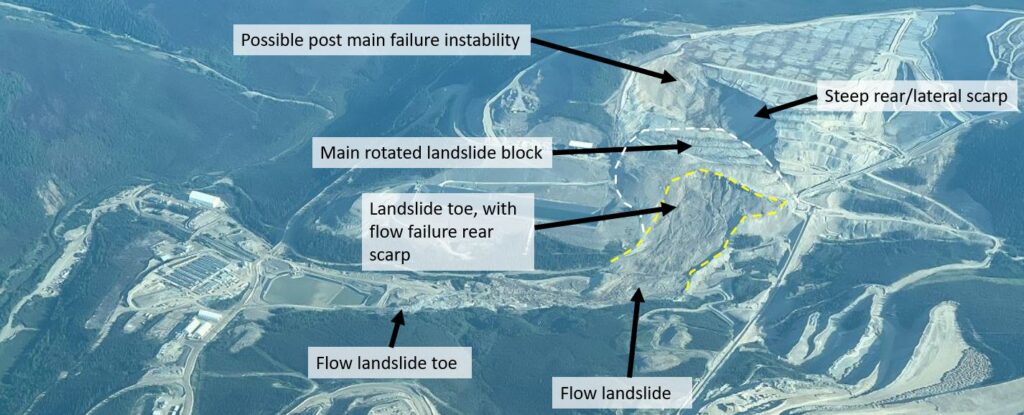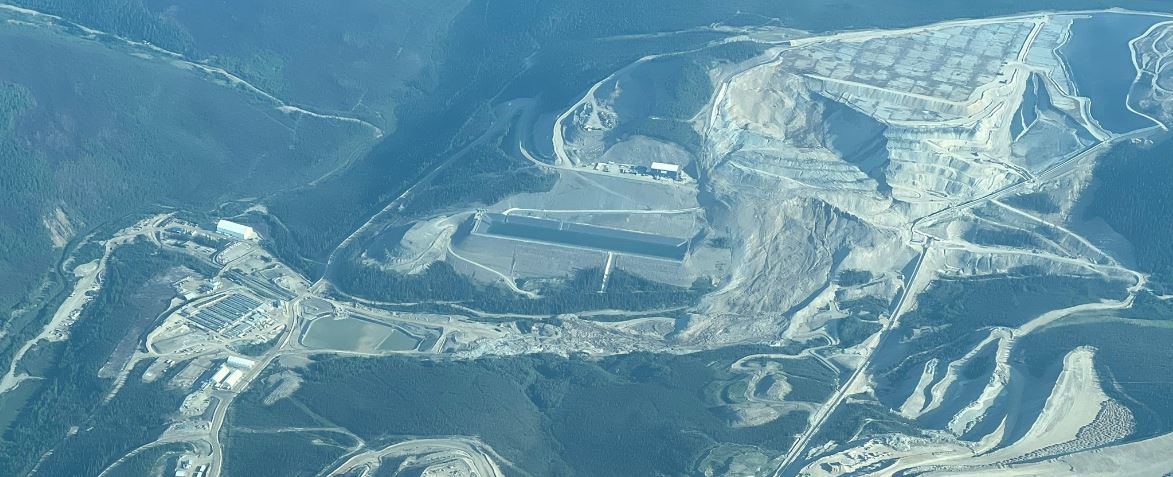The Landslide Blog is written by Dave Petley, who is widely recognized as a world leader in the study and management of landslides.
Information is emerging about the 24 June 2024 landslide at Eagle Mine in Yukon, Canada.
Northern Miner has a video taken from an aircraft flying over the site that is worth a look, but perhaps most interesting is an image that was tweeted by “The Trevor Hall – Mining Stock Daily”:-
The scale of this landslide is impressively large. I have annotated the image below to highlight the main features:-

This is a remarkable, double landslide. The main failure is a huge rotational block, which I have highlighted with white dashes above. This is very deep-seated, a projection of the shear surface from the images takes it through, or close, to the base of the heap leach. There is a 2019 technical report about the mine that includes this statement about the heap leach:-
“The constructed primary [heap leach pad (HLP)] will accommodate up to 90M t of ore and is located approximately 1.2 km north of the Eagle Zone orebody, in the Ann Gulch valley. The base of the primary HLP is located at an elevation of 880 metres above sea level (masl), and at full height, the primary HLP will extend up Ann Gulch to an elevation of approximately 1,225 masl at the top of the planned ore stack.”
Assuming that this is the primary heap leach, the plan was for it to have a thickness of 345 metres.
Post-rotation, two main things appear to have occurred from a stability perspective.
The first is that the toe of the rotational landslide has failed, to form an impressively large flow type failure. I have highlighted the approximate boundaries of this secondary failure in yellow on the image, and have identified the location of its toe.
Second, it appears to me that a part of the rear scarp of the rotational landslide has also failed, although this is a much smaller event.
There are now a series of concerns about the site. The most pressing is the potential for downstream pollution, most particularly from cyanide leaking from the heap leach. This is beyond my area of expertise.
The other is the potential for further failures. I would be concerned about the likelihood of collapse of the near-vertical rear/lateral scarp of the rotational landslide, shown in the image above. This slope is well beyond its angle of natural repose.
I would also be concerned about the potential for a further flow type failure from the main rotated block. Whilst failure could occur at any time, the main risk may be during heavy rainfall. Urgent, large-scale works are likely to be needed to reduce the risk of failure. The costs are going to be substantial as the volumes of material are massive.
All of the risks above can, and surely will, be managed with appropriate action by the operator / owner of the mine and the regulatory authorities.
All of this presumably represents a big issue for the operator / owner of the mine, and their investors. Production has stopped at the site, the value of stock in Victoria Gold has fallen by 82% and there is the potential for a class action from investors.
Finally, there is remarkably little information in the literature about previous heal leach failures. The 13 February 2024 event in Turkey is well known, but a search n both Scopus and Web of Knowledge turns up little more. Investors and insurers of these operations need better evidence of the risks, given the implications of a failure.


